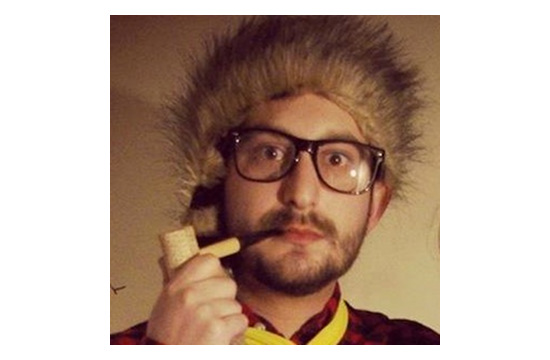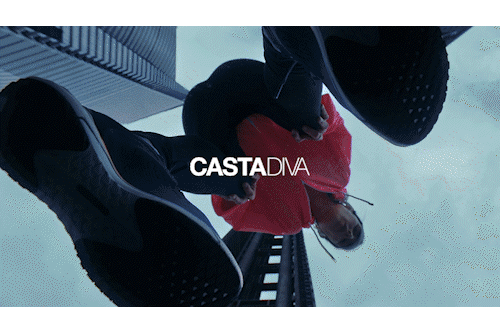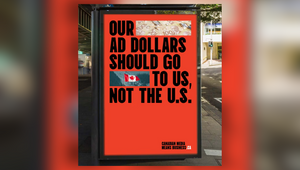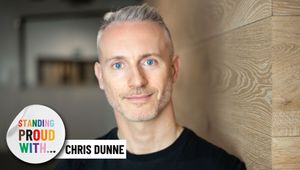
New Talent: Jake Fried

Fatigued with the normality of Ohio school life, director Jake Fried decided to inject some artistic spice into his life. He enlisted in the Rhode Island School of Design (RISD), which then led him on a skill-honing journey to arts school in Boston, the Maryland Institute College of Art (MICA) and finally an Art History course in Boston. He now produces hand drawn animated films using ink, coffee, correction fluid and gouache paint. His most recent film ‘Raw Data’, bagged him a place on Saatchi & Saatchi’s New Directors’ Showcase. Addison Capper caught up with Fried to find out more.
LBB> Tell us a bit about your background - where did you grow up and what kind of child were you?
JF> I was part of a culture-obsessed Jewish family with four sisters, and we lived in the suburbs of the American Midwest – around Chicago, Detroit and Columbus. As a child I was always making stuff, whether it involved writing, drawing or music, and always dreamed of becoming a ‘real artist’ one day.
LBB> Where did you learn your craft?
JF> I took a lot of after-school and weekend art classes as a child. After that, during my teens, I really became disillusioned and bored with normal school and life in Ohio. I ended up spending a summer taking classes at RISD, which then led to me attending a private arts high school in Boston for two years. After high school I studied painting at MICA, moved to Asheville, North Carolina to develop my work for several years, and then returned to the northeast to study Art History at Boston University.
LBB> All of your animations are a series of hand drawn images - how did you come to work in this way and why do you enjoy doing so?
JF> My animation work came directly out of my painting and drawing practice; I have always layered and reworked my images for weeks. Eventually I realized I was more interested in the ‘evolution’ of the image than any ‘final state’. So the animations aren’t that different from what I’ve always done; I just didn’t ‘see them’ until I began recording the process. I particularly enjoy the process because every drawing I make is just a small part of a much bigger picture - through slow and steady work I can create something deeper and more complex than any single image could ever achieve. The process I developed allows room for constant discovery and lets the work reveal itself over a matter of months instead of hours, days or weeks - which feels to me like a more honest or authentic way to express. The work isn’t impulsive or just “coming out of me” in a specific moment or mood, but slowly and thoughtfully arrived at over time.
LBB> Could you tell us a bit more about producing films like this and the processes you follow?
JF> Each animation I make is on one high-grade piece of paper that is consecutively scanned as I add ink, Wite-Out, coffee, and sometimes gouache. ‘The Deep End’ and ‘Raw Data’ are 1500 frames scanned into Photoshop. They were compiled and played back at 25 frames per second on Final Cut Pro. Then I add sound and music last. I complete about 10-25 frames a day – it all depends on what’s happening in the drawing, like small details being added or any sweeping changes that have to be made.
LBB> Your film 'Raw Data' bagged you a place in this year's Saatchi & Saatchi New Directors' Showcase - what did it mean to you, personally, to be featured?
JF> I was incredibly excited to be a part of the New Directors Showcase this year. The artists and filmmakers previously featured at this event have been of the highest quality, and I’m truly honoured to be in their company. The biggest thrill was having my film shown, and the opportunity to speak about it at the Tate Modern – it’s one of the best museums in the world and a place full of work by my personal heroes.
LBB> Can you talk us through 'Raw Data' a bit more - what's the narrative and what inspired it? How long did it take from idea to final film?
JF> 'Raw Data' took about four months from the first drawing to the final film. My work is not truly narrative - the medium is the message - but for this piece I knew I wanted to experiment with metallic-gouache, technological imagery and sustained head-on portraiture. I would say it’s generally about man vs. tech and a sense that the animation watches you as you watch it. My work is not really pre-planned; it becomes itself through the process of making. I fundamentally believe that art making should be a “discovery” process; otherwise I’d have no interest. Rather than just executing a plan, I want to learn something new or follow some unknown path.
LBB> Which pieces of work are you most proud of and why?
JF> Like most artists, I’m always proudest of my latest work – hopefully I will always feel this way. I believe that my best work is ahead of me, and that’s what encourages me to push harder and challenge myself to reach new heights. And just like painting or song writing, I think the value and insights of my individual films grow as I add more to the body of work.
LBB> What do think the next 12 months hold for you?
JF> The response to my work in the past year has been incredible. I’ve had the opportunity to screen my work in dozens of cities around the world - I can only hope the next year is as fruitful. One of the bigger projects I’m working on is the “Artist Project” for The Museum of Fine Arts, Boston which I began this month. For the next school year I will be working with 100 children from Boston after-school groups to create a variety of animations. They will be inspired by their communities and the Museum's collection. Our films and artwork will be exhibited in the Museum's Contemporary Art Wing from May - October 2014. I am also working on a new film which I began in May and plan to finish sometime later this Fall which I am very excited about.
Website: inkwood.net
Contact: jakejfried@gmail.com















